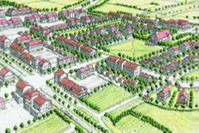HOW WOULD YOU LIKE TO GROW?
A LOOK INTO HOW TRADITIONAL NEIGHBORHOOD DEVELOPMENTS TURN YOUR TOWN INTO A HOME.
 vs.
vs. 
By Raven Halle
Developing cities often find themselves having to answer the question, “how should we continue to grow?” Due to developmental pressures, not growing at all is rarely an option; in
turn, places face a choice between growing through implementing the principles of conventional suburban development and the principles of traditional neighborhood development. In a few
words, and in favor of the latter, the traditional neighborhood developments are perhaps best captured by architect Jan Gehl’s statement that “life takes place on foot.” Traditional
neighborhood developments, which are often unique to their location and serve as prototypes for other traditional neighborhood developments, are displays of what residential areas can become
when the focus is placed on people rather than on industry. The key to understanding the influence of traditional neighborhood developments lies in their identity as mixed-use
developments, meaning that they are a blend of the residential, the commercial, and the environmental. This mixed-use approach to planning offers something different from the
traditional ideas of suburbia; where mixed-use fosters connections through an emphasis on the pedestrian, other single-use developments may rely on vehicular modes of transportation to
create the same. but often lesser connections. Again, in traditional neighborhoods, “life takes place on foot:” while your children walk to school, you can walk to the grocery store; step out of
your apartment building’s elevator and be immediately between the wine bar and the dance studio; go to your dental appointment and then the eye doctor across the street; walk your mother
from the assisted-living facility to the pool for a summer’s day swim. This is what it means to be a walkable place; to be a town.
First, let’s go back around 80 years to life in America after World War II. During this period, things such as the GI Bill, the baby boom, the increased affordability of automobiles, and
the large-scale housing projects built on the outskirts of existing cities contributed to what we call “urban sprawl,” or the migration of folks from big cities to single-family homes often
separated by roads, landscaping, and long expanses of land. These ideas might conjure within us the iconic rhetoric of the “American Dream,” or the notion of 2.5 children, a pet, and a
picket-fence. While this long-surviving concept was first an item of praise and then a sign of conformity, early suburbia’s promise of a cookie-cutter life personified a sort of affluence that
became highly attractive to the generation who had recently survived two world wars and the Great Depression. So, after the war, the industries which had mobilized the Allied victory turned
their focus inward to propel the previously mentioned and eventual causes of urban sprawl. Among the many detriments to come from this—like the loss of agricultural lands, an increase in
distance between home, work, and leisure places, and an increase in pollution due to distance—is the loss of a sense of place, or, as coined by James Howard Kunstler, “the geography of
nowhere.” This is, in the last 20 years, perhaps what traditional neighborhood developments have most sought to change: turning “nowhere” into “somewhere.” And they have done just that.
To create an analogy, creating a town for planners is like making a cake to bakers. Suburbia has the ingredients: people, houses, sometimes community centers, cars, and roads
which lead the cars out of the neighborhood to the desired destination—work, school, the grocery store, church, piano lessons. To bakers, this is the equivalent of eggs, butter, flour, sugar, and
utensils lined up on the table. But to bake a cake, the ingredients must be more than present—they must be mixed. So, too, do the ingredients of the suburbs need to be combined to
create a town. In the simplest of terms, this comparison displays the difference between a conventional suburban development and a traditional neighborhood development. When people,
houses, businesses, schools, roads, and parks are integrated—the “mixed” in “mixed-use—” a town is born. This is the creation of “somewhere,” a place not isolated by gates or roads but open
and accessible to all. Again, traditional neighborhood developments do not necessarily subscribe to the cookie-cutter homes of the suburbs: a doctor can live next door to a teacher; a lawyer
down the hall from an author. And, further again, a town is sustainable and self-contained in that most immediate needs can be met without having to commute. Ultimately, the concentration of
homes and necessary establishments forges a sense of connection, better-allowing things like the stimulation of the local economy through shopping small businesses and supporting the
community through events such as annual holiday celebrations.
A town’s sense of connection and community is certainly facilitated by its residents, but on a more basic level, it is first rendered by the careful planning and construction on the part of
its developers. For a town to be a successful pedestrian-oriented development, many complex design and planning problems must be addressed. For a town to be effective, “synergies,” or
positive relationships between multiple agents must be created and designed to work both vertically and horizontally. Synergies in a traditional neighborhood development be seen in
vertical mixed-use buildings, such as those that have apartments above shops and offices. This is an example of one of the many characteristics of a traditional neighborhood development—also
including a variation in housing type, a well-planned and connected system of streets, and conveniences such as places of worship, parks, schools, and pools—all of which will be
discussed in a later series of articles revolving around traditional neighborhood developments.











